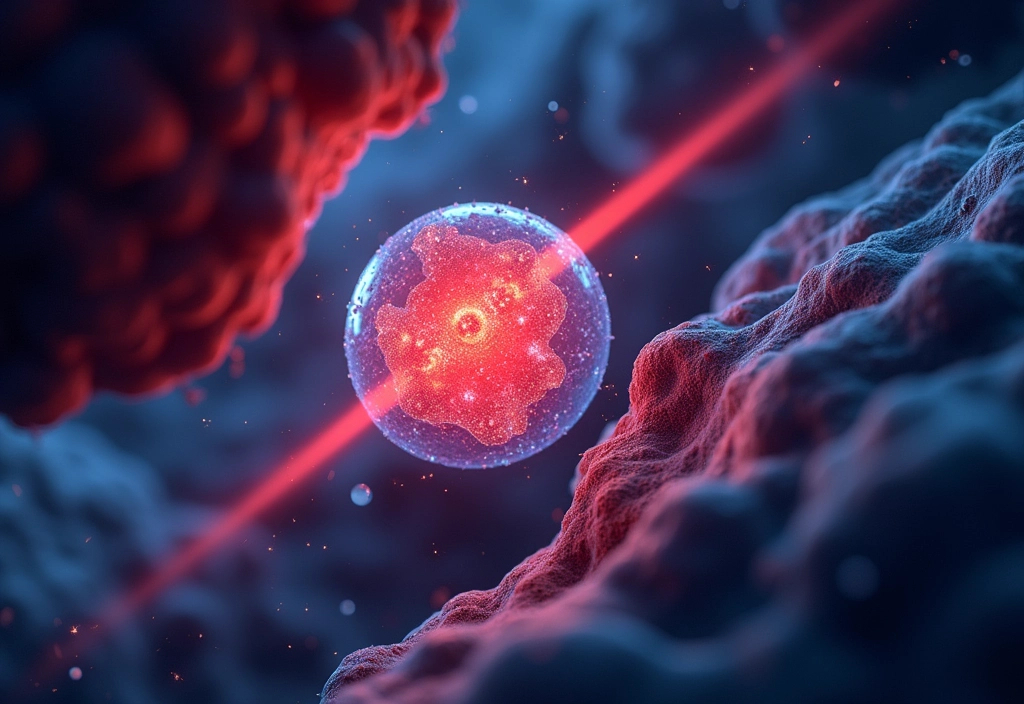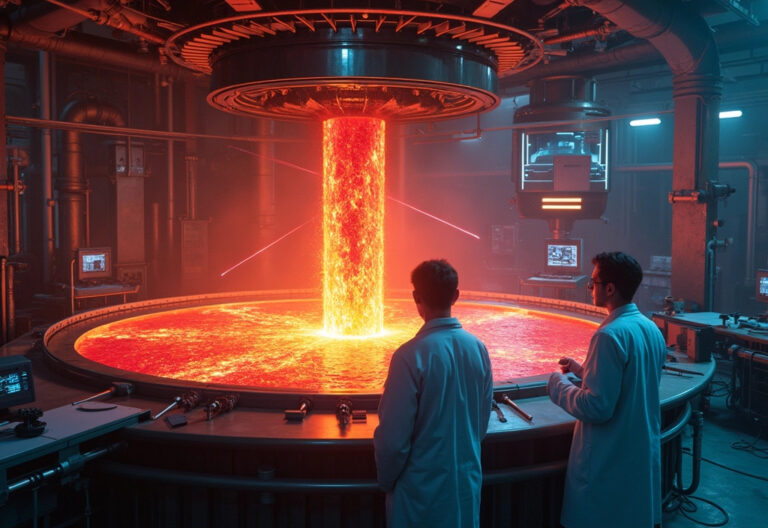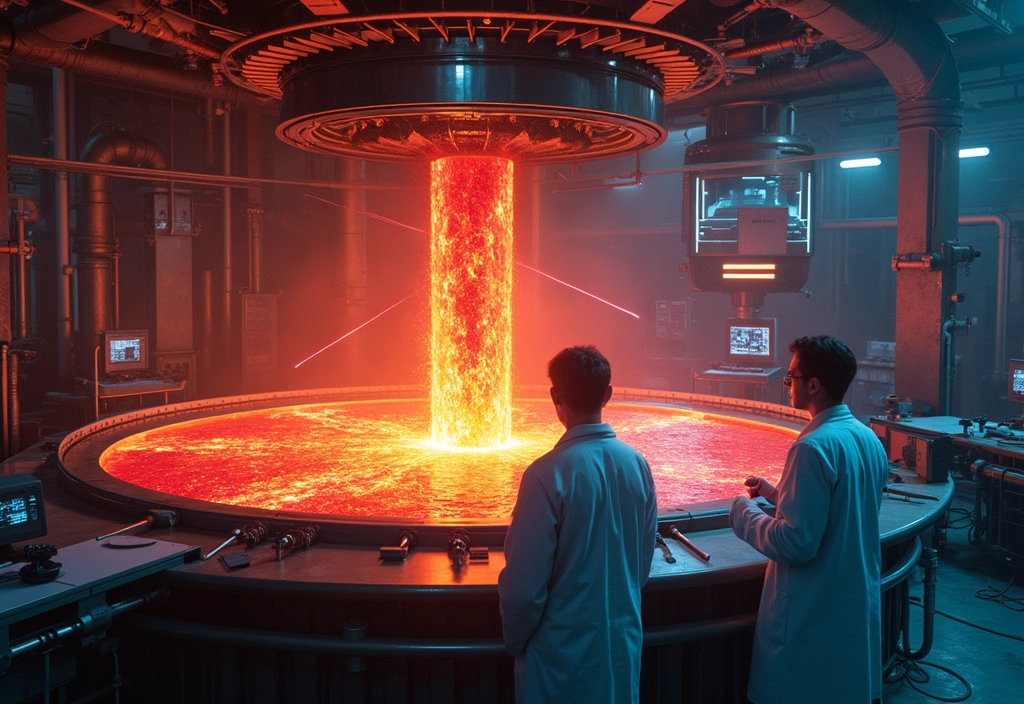A New Dawn for Cancer Treatment
Photodynamic therapy (PDT) offers a promising path for treating cancer without the harsh side effects of chemotherapy or radiation. However, past attempts faced major limitations—such as poor light penetration, low tumor specificity, and unwanted damage to healthy cells. Now, researchers have unveiled a powerful solution: cyanine-carborane salts.
This novel compound pairing enables targeted, light-activated treatment that shrinks tumors while minimizing harm to healthy tissue. In mouse models, the therapy eliminated tumors with remarkable precision and safety.
What Makes Cyanine-Carborane Salts Unique?
These molecules combine two parts to form a potent cancer-fighting duo:
- Cyanine dyes, which absorb near-infrared (NIR) light and selectively highlight cancer cells.
- Carborane anions, which provide chemical stability and help fine-tune the dye’s performance.
Together, they create a new class of photosensitizers—compounds that generate reactive oxygen species (ROS) when exposed to NIR light. These ROS attack cancer cells from within, making the treatment highly effective.
Why This Matters for Cancer Patients
This breakthrough stands out for several reasons:
- Deeper penetration: NIR light reaches deeper tissues, enabling treatment of hard-to-reach tumors.
- Low toxicity: Unlike older PDT drugs, these compounds remain harmless until activated by light.
- Selective targeting: The salts accumulate in cancer cells—especially in their mitochondria—while sparing healthy tissue.
- Triple ROS attack: They unleash ROS in multiple cell compartments, overwhelming cancer cells quickly.
As a result, this therapy could offer a safer and more effective option for patients battling aggressive cancers.
How the Therapy Works
The treatment follows a simple but powerful process:
- Injection: Doctors inject the cyanine-carborane salts into the patient.
- Targeting: The compounds accumulate inside tumor cells, especially in their energy-producing mitochondria.
- Activation: A dose of NIR light activates the salts.
- Destruction: The light exposure triggers ROS production, destroying cancer cells from within.
During testing, two compounds—CyCB11H6Cl6 and CyCB9HCl9—demonstrated exceptional performance in shrinking tumors and halting their spread.
Mitochondria: A Vulnerable Target
Interestingly, the new therapy homes in on mitochondria—the powerhouses of the cell. These organelles have a highly negative internal environment, which attracts the negatively charged PS molecules. Once inside, the ROS burst disrupts energy production, causes membrane damage, and triggers early apoptosis, or programmed cell death.
By disrupting this critical cellular function, the treatment disables cancer cells without affecting surrounding healthy tissue.
Strong Results in Mouse Models
In live mouse trials, researchers injected cancer cells into the mammary fat pads of mice to mimic aggressive breast cancer. After tumors formed, they treated the mice with cyanine-carborane salts and shined NIR light on the tumor area every 48 hours.
The results were dramatic: tumors shrank until they disappeared. Moreover, the treatment did not harm normal tissue or cause weight loss—indicating high safety. Even in mice with compromised immune systems, the therapy still worked, proving that its effectiveness doesn’t rely on immune responses alone.
Better Than Current PDT Options
Current PDT drugs like indocyanine green (ICG) break down too quickly and don’t target tumors well. Furthermore, they often linger in healthy tissue and make patients sensitive to light for weeks. In contrast, the new cyanine-carborane salts stay active longer in tumors and exit healthy tissues safely—making them far more suitable for real-world use.
A Closer Look at How It All Comes Together
Beyond eliminating tumors, the therapy also blocks cancer from spreading. It disrupts the epithelial-mesenchymal transition (EMT)—a key process that allows cancer to migrate and invade new tissues. After light activation, treated cells showed lower levels of proteins like Snail and Vimentin that drive EMT.
At the same time, researchers found reduced formation of F-actin filaments, structures that cancer cells use to move. This double action prevents both growth and metastasis.
Why ROS Generation Is a Game Changer
One reason this therapy works so well is its ability to produce three types of reactive oxygen species:
- Mitochondrial ROS
- Cytoplasmic ROS
- Singlet oxygen
This triple assault overwhelms cancer cells. It also lowers the GTP/ATP ratio, destabilizing cellular energy balance and further disrupting cancer metabolism. The high levels of ROS even break down the cytoskeleton, stopping cancer cells from moving or spreading.
Toward the Future of Cancer Treatment
The dual-action approach—targeting mitochondria and blocking metastasis—could make this treatment especially powerful for metastatic breast cancer, one of the hardest types to treat. Even better, this therapy can complement existing treatments such as surgery, chemotherapy, and radiation.
Researchers now plan to move the therapy into clinical trials. If successful, it could transform how doctors treat not only breast cancer, but potentially other aggressive cancers as well.
Final Thoughts
Cyanine-carborane photodynamic therapy represents a major step forward in cancer care. By combining light, chemistry, and cell biology, scientists have created a treatment that’s both potent and safe. It attacks cancer where it hurts most—its ability to grow and spread—while protecting the rest of the body.
This research could pave the way for a new era of precision, light-activated medicine that turns tumors into targets and gives patients better, less invasive options for survival.
Check out the cool NewsWade YouTube Video about this article!
Article Derived from: A. Roshanzadeh, H. C. D. Medeiros, C. K. Herrera, C. Malhado, A. W. Tomich, S. P. Fisher, S. O. Lovera, M. Bates, V. Lavallo, R. R. Lunt, S. Y. Lunt, Angew. Chem. Int. Ed. 2025, 64, e202419759. https://doi.org/10.1002/anie.202419759















